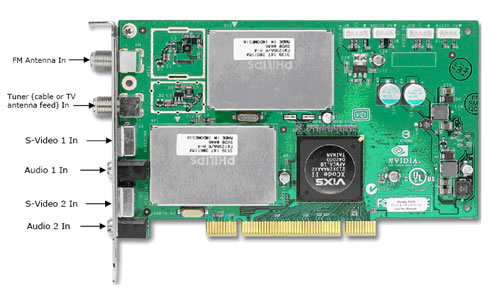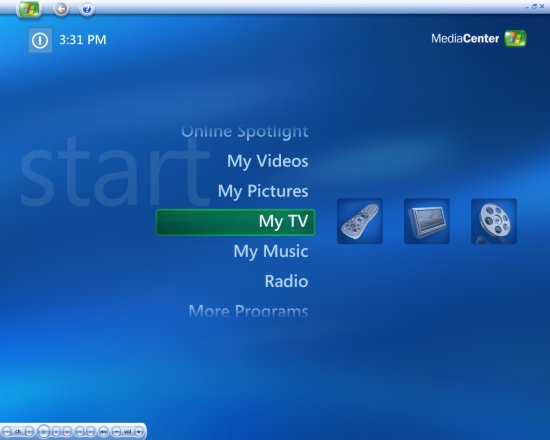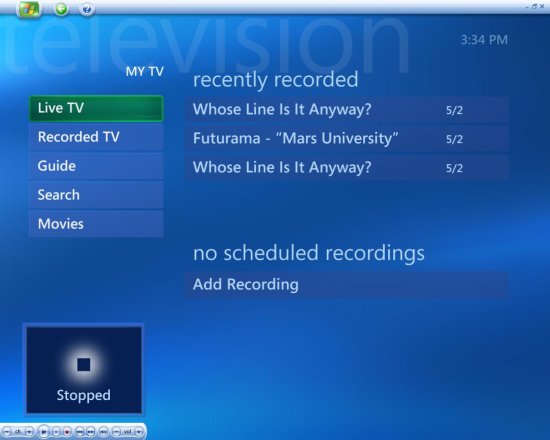
Original Link: https://www.anandtech.com/show/2011
Introduction
It seems that now more than ever people are using their computers for a much wider variety of applications than in the past. For example, home theater systems are being centered more around computers now because of the versatility these systems offer. The level of quality being offered with computer home theaters is approaching - and in some cases surpassing - that of stand-alone components, and having one at the center of a home theater setup is looking more and more attractive for many users.While your parents or grandparents may be more comfortable dealing with more traditional separate audio and video components, most people who are able to navigate around their computers well enough wouldn't have much trouble getting a home theater setup on it. There is a wide variety of hardware and software out there to make this easier for us, and at the core of a PC setup like this would have to be the video card, sound card, and a TV tuner card. This article will focus on the last of those components.
There are many TV tuner cards available right now, and we'll be focusing on one in particular from NVIDIA for this review. We have previously reviewed the Hauppauge PVR-250 and ATI Theater 550, and we concluded that those two cards are the best quality analog tuners at present. (We also provided a look at the Theater 550 compared with a couple HDTV options, and that article provides some insight on how many of us currently view the HTPC market.) In the past, ATI has been the one to provide these kinds of parts among the graphics chip makers, and they are still ahead of NVIDIA in this area. However, with the release of the DualTV MCE tuner card, NVIDIA takes a step forward in this department. Hauppauge has also been a staple in this market, but as we feel they basically offer equivalent quality to the ATI Theater 550, we will only be including the ATI card in this article.
TV and movie recording services like TiVo and other DVRs are popular right now, but many people find their subscription fees and recording limitations undesirable. Luckily, there is an alternative and more people are beginning to see the benefits of a personal computer TV tuner/recorder for recording and watching their favorite shows.
We'll be looking closely at the NVIDIA DualTV MCE and it's features, as well as comparing it to a couple of other TV tuner solutions available in competition with this card. ATI's Theater 550 Pro has been around for a while and is similar to the DualTV MCE as a stand-alone TV tuner card. Also, while not quite as similar, ATI's All-In-Wonder line of cards offer TV tuning and graphics acceleration in one package and we'll look at the pros and cons of a solution like this as opposed to the DualTV MCE. So first let's take a look at the hardware.
The Card
The DualTV MCE fits into a PCI slot and operates alongside your video card much like ATI's Theater 550 Pro. The card is passively cooled and has no external power connections, making installation very easy. It comes with a CATV/TV antenna input, two S-VIDEO and audio inputs, and an FM antenna.
The card comes bundled with all the necessary connectors for a wide variety of home theater and audio setups, as well as a standard remote control for use with Windows Media Center. The card takes a standard single cable input and splits it into two signals internally, and the on board amplifier and splitter ensures better signal quality than having an external splitter do the job. The DualTV MCE's MPEG encoder is made by a company called Vixs, and the two tuners on it are made by Philips. Below is an illustration of the card's basic architecture.

Features
As far as features go, the DualTV MCE is fairly straightforward. It's biggest feature would be the fact that, as its name indicates, it offers dual video in, allowing you to watch and record two programs at the same time. This is essentially what cable services like TiVo and DVR offer, however because it is recording to your computer, the capacity for how much can be recorded and stored is potentially much higher.There are other smaller features of the DualTV MCE, when used with Windows Media Center Edition, that add to the overall package, such as something called MediaSqueeze. MediaSqueeze basically lets you record live TV at a lower bit rate without a major loss in quality. It also lets you translate video that's already been recorded to a lower bit rate, with 4 different quality settings: fair, good, better, and best mode. This allows you to make better use of your disk space for video archiving. NVIDIA's PureVideo is incorporated into the package, which ensures good quality digital video decoding. PureVideo can be purchased for use with any NVIDIA GPU, but the fact that it is bundled with the DualTV is a good thing. We would like to see PureVideo come bundled with graphics cards in the future as well.
Windows XP MCE
Windows XP Media Center Edition is a version of Windows that offers a variety of audio and video applications beyond what you get with the standard Windows XP OS. An interesting side note is that MCE 2005 includes many of the performance enhancements of Windows Server 2003, so it can actually outperform XP Pro systems by a small margin. The main interface for multimedia applications is easy to navigate and full of options.

Windows MCE is listed as a minimum requirement for the DualTV MCE, and is not included with the card package. Unfortunately, there is no software provided for non-MCE Windows installations. This seems a little strange to us, but our focus for this review is on the card itself, and we will be looking more in depth at Windows MCE in a future article.
TV Tuner Comparisons
How does the NVIDIA DualTV MCE compare with the ATI Theater 550 Pro and All-In-Wonder series of cards? We'll start with power consumption, and we tested each of the three cards at three different states: while the system is idle, while watching live TV, and while recording live TV. Here are the results.| System Power Draw | |||
| Idle | Watching TV | Recording TV | |
| NVIDIA DualTV MCE | 162 | 179 | 189 |
| ATI MSI Theater 550 Pro | 159 | 170 | 175 |
| ATI X1800 AIW | 154 | 172 | 172 |
For reference, the power draw of the system without a TV tuner card installed (excluding the AIW) is 145 Watts. We used an X1800 GTO for the main graphics card with the DualTV and Theater 550 cards, in order to keep the power draws as close as possible to that of the AIW card. We can see from the table that the Theater 550 and AIW draw less power than the DualTV while watching and recording live TV, which makes sense given the DualTV's ability to record two sources as opposed to the other cards' one.
Something else we're interested in looking at is channel switching speed between these three cards, as this is something that can vary between different TV tuner cards. The type of tuner on the card can affect this, and all three of these cards use silicone tuners, which can be slower than analog ones, but take up less space on the board. Interestingly, we found that the AIW had the fastest channel switch time at about one second. The Theater 550 had the slowest channel switch time at about three seconds, and the DualTV MCE was slightly faster than the Theater 550 at about 2 and a half seconds. While three seconds doesn't sound like a very long time at all, it can be a very annoying delay if you like channel surfing.
Between these three TV Tuners, there are some major differences aside from power and channel switching speed. Of course the AIW is a much different solution than the other two in that it is a complete 3D graphics card with a built-in TV tuner. The DualTV and Theater 550 are stand alone TV tuners meant to operate alongside a separate graphics card. Having a graphics card and TV Tuner combined can be good or bad, depending on the personal preference. Some people would rather have the freedom of being able to switch graphics cards while keeping the same TV tuner, while others may prefer the combination of the two in order to keep the extra PCI/PCI-E slot open.
Note that the Theater 550 is available in both PCI and PCI-E X1 versions; at present, it is the only PCI-E TV tuner on the market. Also, the X1800 AIW is a very large part and wouldn't fit very well in a compact system, though to be fair ATI offers AIW cards in a wide range of performance and size. One more thing to note about the AIW cards is that they don't have MPEG-2 encoding in hardware, which means they won't work with Windows MCE. The Theater 550 Pro and NVIDIA DualTV include this feature and work fine with MCE 2005.
The Theater 550 Pro is much more similar to the DualTV MCE, with the major difference being the ability to only record one source as opposed to the DualTV's two. Coupled with Windows MCE, the DualTV's capabilities and ease-of-use outweigh those offered by the Theater 550 Pro and it's included PowerCinema 3 (or 4, depending on which T550 card you purchase) software, but the fact that the DualTV MCE doesn't include any other software is a problem.
Below are some screenshot captures of each of these cards' live video for image quality comparison.
NVIDIA DualTV


ATI Theater 550 Pro


ATI X1800 AIW


We can see that there doesn't seem to be much difference between the quality of the DualTV MCE and the Theater 550 Pro, but with the AIW, the image looks a little sharper than the others. This is especially noticeable in the writing on two of the images. Overall though, the differences aren't that great and all of these cards provide good quality video with live TV. Unfortunately, HDTV isn't supported for any of you that want that feature, but of course the number of HD broadcasts and channels is still significantly lower than the number of standard analog channels.
A simple screenshot doesn't always convey quality as well as a video, so we have also created a BitTorrent share with video samples from the three cards. Download the torrent file, and then use your favorite BitTorrent client. Total size of the videos files is 22.3MB. Note that we have the original MCE generated file for the DualTV as well as a high quality re-encode to standard MPEG-2. (The DVR-MS extension doesn't work with all video players, but it works with WMP10.)
Final Words
A TV Tuner card is a nice addition to any multimedia PC, and the NVIDIA DualTV MCE is a cut above most tuners because of its ability to record two sources at once. We especially like the fact that they do the signal splitting internally, rather than having two CATV inputs. The card is easy to install and sets up in a few minutes with Windows MCE. Of course, part of the advantage is that MCE practically sets itself up by auto scanning for the TV signal and then downloading the program guide for your specific area and cable service, letting you watch and record your favorite shows in no time.Not only is it nice to be able to record and archive as much video as your hard drive will allow, but having control over details like video quality are nice as well. On top of this, with a PC TV Tuner, the video that you capture can be edited and manipulated in limitless ways for projects ranging from home movies, show movie montages for creative purposes, or simply editing out commercials or unwanted scenes from your recordings. You can also burn the completed content to a DVD if you so choose. This is something that is just not possible with a service like TiVo, at least not without using a PC to do all the extra stuff.
Something we see as a bit of a drawback is that the DualTV MCE is marketed towards Windows XP MCE users to fully realize the card's potential, and you will need to purchase this version of Windows separately. However, the DualTV MCE does work with free (and not so free) TV tuner applications like SageTV, BeyondTV and Yahoo Go! for those without Windows MCE. The fact that the DualTV MCE is only marketed toward people with the Windows MCE is a bit odd, and we feel that they should perhaps offer a bundle package with the card and MCE, and even better would be the inclusion of a standalone application for viewing/recording in other versions of Windows.
As always, price will play a big role in which TV tuner is right for you, so lets look at this aspect for a moment. Right now, the DualTV MCE is being offered at the list price of $169 on the NVIDIA store website. This about twice as much as the ATI Theater 550 Pro, which is on the market for around $80. You could technically have two of these cards installed and recording at the same time to simulate what the DualTV MCE does, but it may be less than practical given the space it would take up on your motherboard (especially if building a small HTPC box). The Theater 550 Pro is an excellent TV tuner solution for those only needing to record one channel at a time, but we think the freedom of being able to record/watch an extra source makes the DualTV MCE worth the extra money.
For those who want to do some gaming but don't want any extra PCI slots used up in their system, one of ATI's AIW cards might be the right choice. The prices range from about $100 to $400 depending on what kind of graphics performance you want, but you will still only be able to record a single TV signal with these cards. You also run into the potential problem of losing the TV recording aspect if you have to upgrade your graphics card -- and given the rate at which GPUs are updated, that will probably happen within 18 months or less.
Separate TV tuner cards will ultimately be more versatile than an AIW when building a multimedia system, because they can be used in both gaming and non-gaming systems. This fact along with the dual recording capabilities of the NVIDIA DualTV MCE make it one of the best choices for those interested in buying a high quality TV tuner solution, especially for those with Windows MCE. About the only other competing dual-tuner solution we'd consider right now is the Hauppauge PVR-500. In terms of cost, online prices are slightly cheaper than the DualTV, but we expect similar pricing from the NVIDIA card once it hits the retail market, and at that point it's basically a tossup.
It's nice to know that there are alternatives to the cable companies' standard recording "services" like TiVo. These TV tuner cards provide the same service with more flexibility for those with computers, without an added monthly subscription fee. We predict that more people will be interested in integrating their TV and PC in the future, and cards like the NVIDIA DualTV MCE make this an attractive prospect for PC owners in the present.







